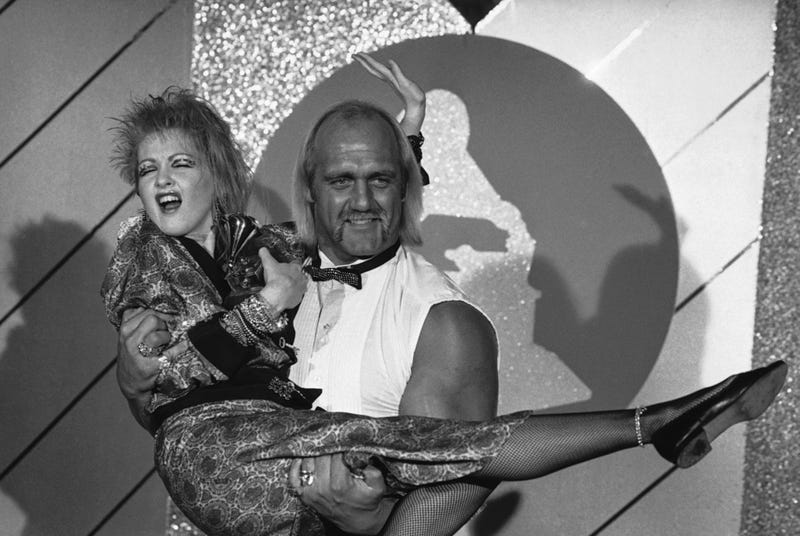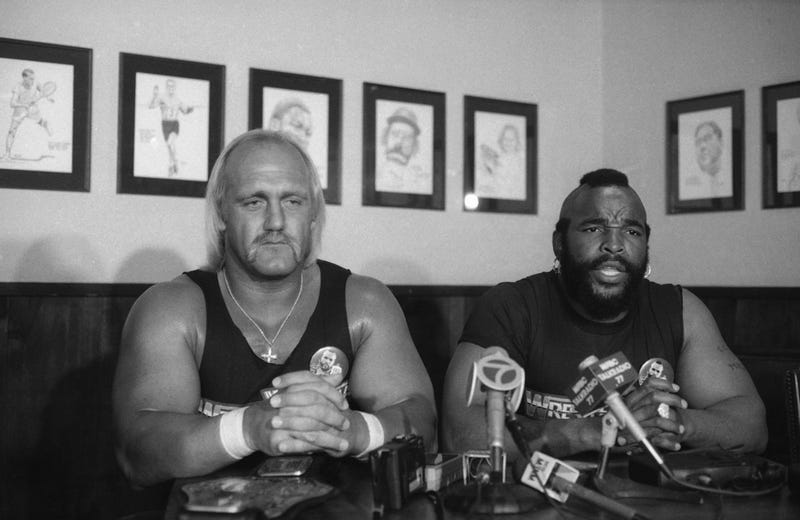
Terry Bollea, or as most people know and remember him, Hulk Hogan, died Thursday at the age of 71. Bigger than life, bigger than any wrestling star, and just plain big, Hogan was a cultural icon throughout the 1980s, appearing in movies, constantly on television, body slamming Andre The Giant, and it continued into the 1990s and well into the 2000s.
But the Hulk Hogan that showed up in Rocky III and in the WWF (now the WWE) started smaller as wrestling fans in the Twin Cities know well. Bollea became "Hulk Hogan" thanks to longtime WWE promoter Vince McMahon, but he grew to embody "Hulk Hogan" in Minnesota.
Hogan was born in August, Georgia and grew up mainly in Tampa-St. Pete, Florida. His stature - all six-foot-seven of him - drew the eye of local wrestling promoters. He started to wrestle across the south before heading to the northeast U.S. and wrestling for McMahon's early WWF shows. He also wrestled in Japan, where the "sport" was a massive draw.
This was before wrestling was a national phenomenon, and when regional promotions dominated the country. By the middle of the decade, there wasn't a boy in America who didn't worship at the alter of "Hulkamania" brother. We all "trained, prayed and ate our vitamins" because the Hulkster said so.
It was those regional hubs, including the Midwest where Verne Gagne's AWA was perhaps the most successful of all, where wrestling's future stars were being born and evolving. That included the future Hulk Hogan who was still building up his character.
"He came into Minneapolis and I think it was either '78 or '79," remembers one of the AWA's early stars, 'Jumpin' Jim Brunzell who spoke to WCCO's Chad Hartman. "I had a gym that I opened in White Bear Lake called Jumping Jim's Gym, and I met him at Channel 11. We got along and we knew. I had some friends in the business that knew of him and then, you know, I had followed him a little bit when he was in New York and then when he got here, he just blew the tires off of everything."
When Hogan "got here" was in 1981. He came into the AWA as a villain but that didn't last. Fans loved the Hulkster and he quickly grew into a favorite, taking on other villains like Nick Bockwinkle and the Hennan Family.
"I mean, he was the biggest thing to hit the AWA ever," remembers Brunzell. "He was a total package. I mean, he was a good looking guy, he was athletic, he could talk and he had tons of charisma. I mean, he was just - he was a golden goose."
It didn't last of course. Hogan appeared in Rocky III in 1982 vaulting him into movie theaters all across the country. At the same time, McMahon was quickly scooping up the top talent from the regional wrestling companies and quickly building a national brand, the WWF. Soon enough, in 1983, Hulk Hogan was a star for the biggest brand in wrestling.
It wouldn't be long before it was all over for those regional companies - including the AWA.
"Vince took all the talent and he had everybody. The biggest person to thank was Hulk Hogan, the golden goose," says Brunzell.

Hogan himself remembered the Twin Cities fondly even decades later. Talking to WCCO's Morning News with Vineeta Sawkar about his new beer brand, "Real American Beer," Hogan talked about those early career relationships he built.
"I just love the Twin Cities," Hogan said. "I was here four years, I love this place. I fell in love with it. I have a lot of friends here still and it's just one of the states."
Hulk at one time lived in an apartment near the old Met Center before buying a house in Bloomington more than 40 years ago.
"Behind the Met Center there was an apartment complex called the Versailles Apartments," recalls Hogan. "I started out living there and I bought a house in Bloomington off 494 and France, and I just love the Twin Cities."
Brunzell says that Hogan the wrestler, and Bollea the person, were very different.
"I knew him 45 years, and I tell you, a lot of people ask about how he was a quiet guy," recalls Brunzell. "He had two different lives, Hulk Hogan and Terry Bollea."
Brunzell added that Hogan's relatively short run in the Twin Cities could have had a different ending if Gagne would have been willing to make him the Heavyweight Champion - or even gotten him involved in the business. In April of 1983, Hogan was taking on Bockwinkle for the championship, a chance to crown the incredibly popular Hogan as the AWA's top draw.
At the old St. Paul Civic Center, the 48-year old Bockwinkle, who had been wrestling for nearly three decades, beat the up-and-coming Hogan who was just 28-years old. It was a perfect set-up for the passing of the torch to a young star. Hogan dominated the match, pinning Bockwinkle and the Civic Center crowd erupted. Not so fast. Instead of the new era of Hogan, Gagne and the AWA pulled the rug out from under Hogan and his "Hulkamaniacs." Announcer Mean Gene Okerlund said that Hogan had been "disqualified for flipping Bockwinkel over the top rope to break the Sleeper Hold that Bockwinkel had locked in."
Hogan was gone in mere months. Mean Gene and Bobby Heenan - Bockwinkle's manager - soon joined Hogan with the WWF. According to Brunzell, the personalities of Hogan and Gagne just didn't mesh, and he says it was a lost opportunity.
"I personally feel that, because of Hulk Hogan, what his caricature was in wrestling, and what he portrayed, was totally different than the all-American athlete like Vern Gagne," Brunzell explains. "I just think personally, that might have hurt Vern's ego. Even though if he would have done that. I mean, 'Hulkamania' started here in Minneapolis and St. Paul, and then found its way to New York. But if he would have been the champion here? No telling. I mean, the AWA would probably still be here."
